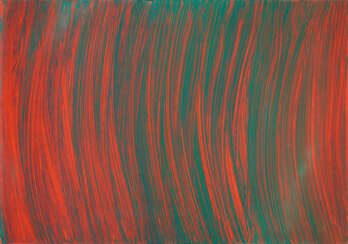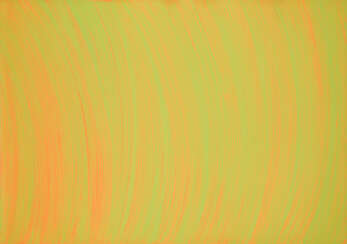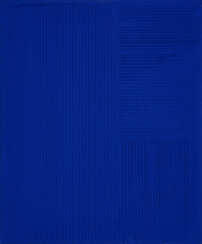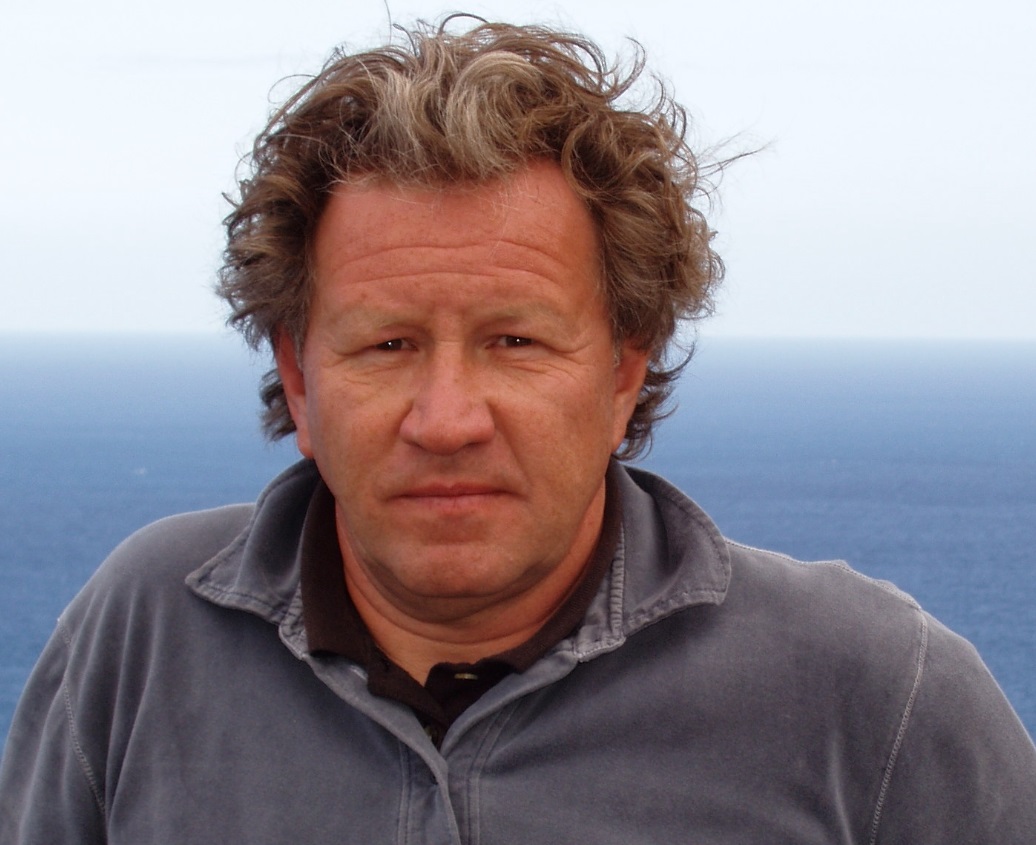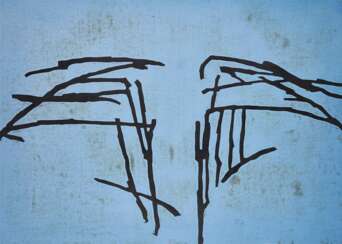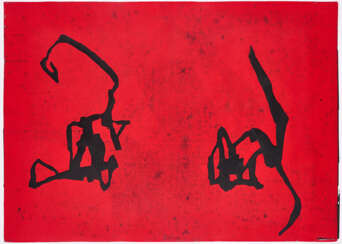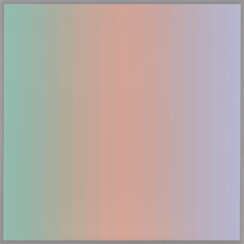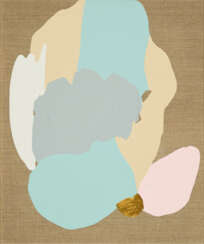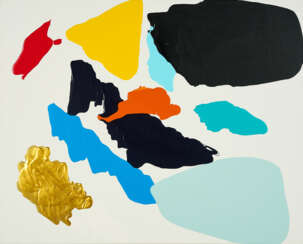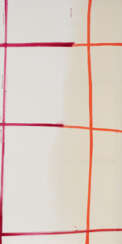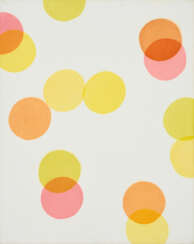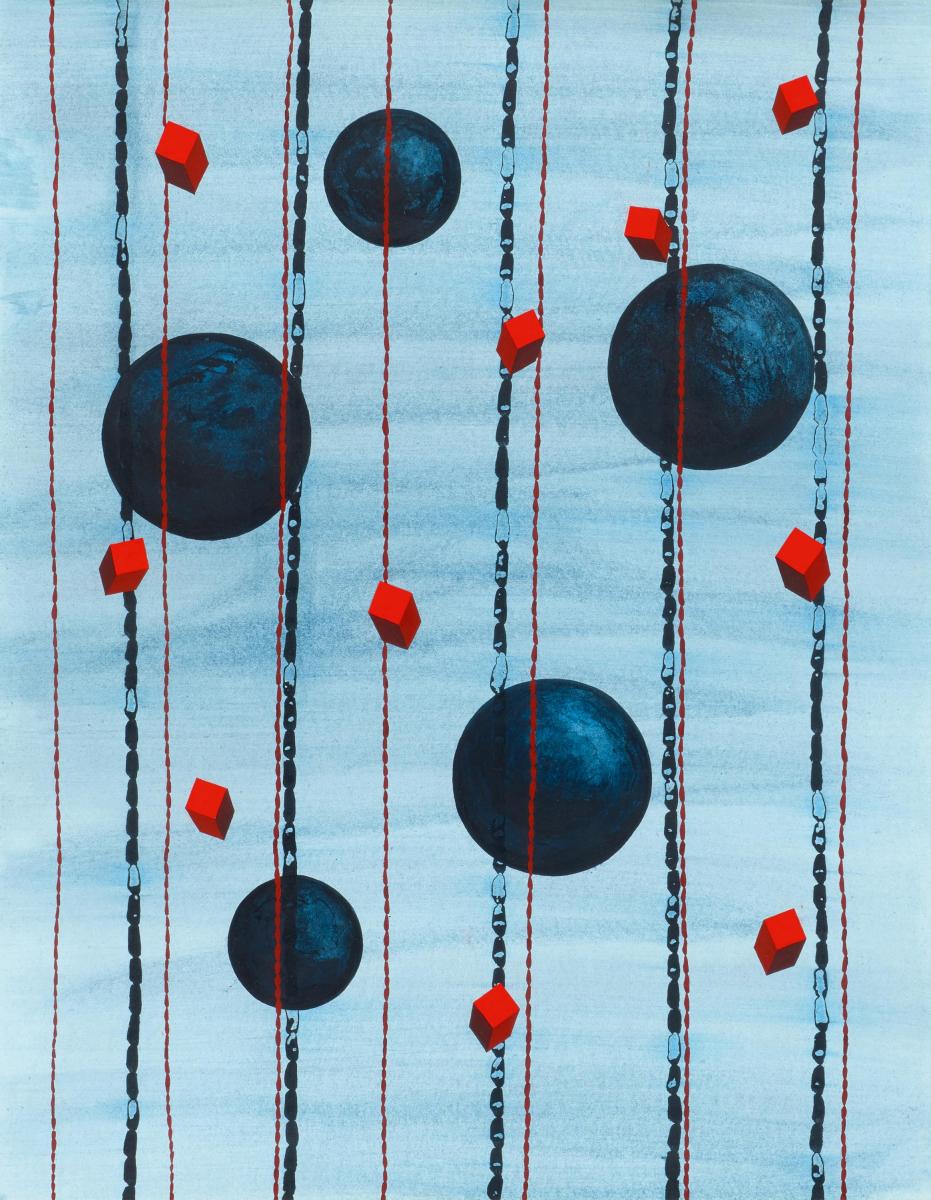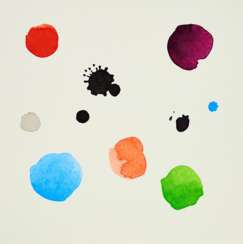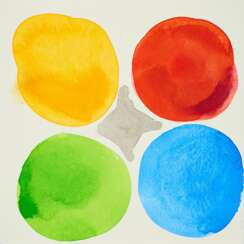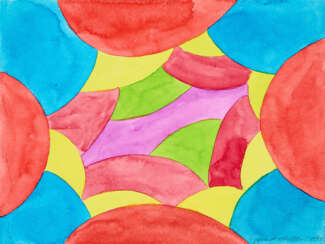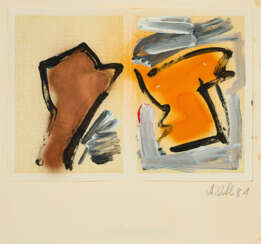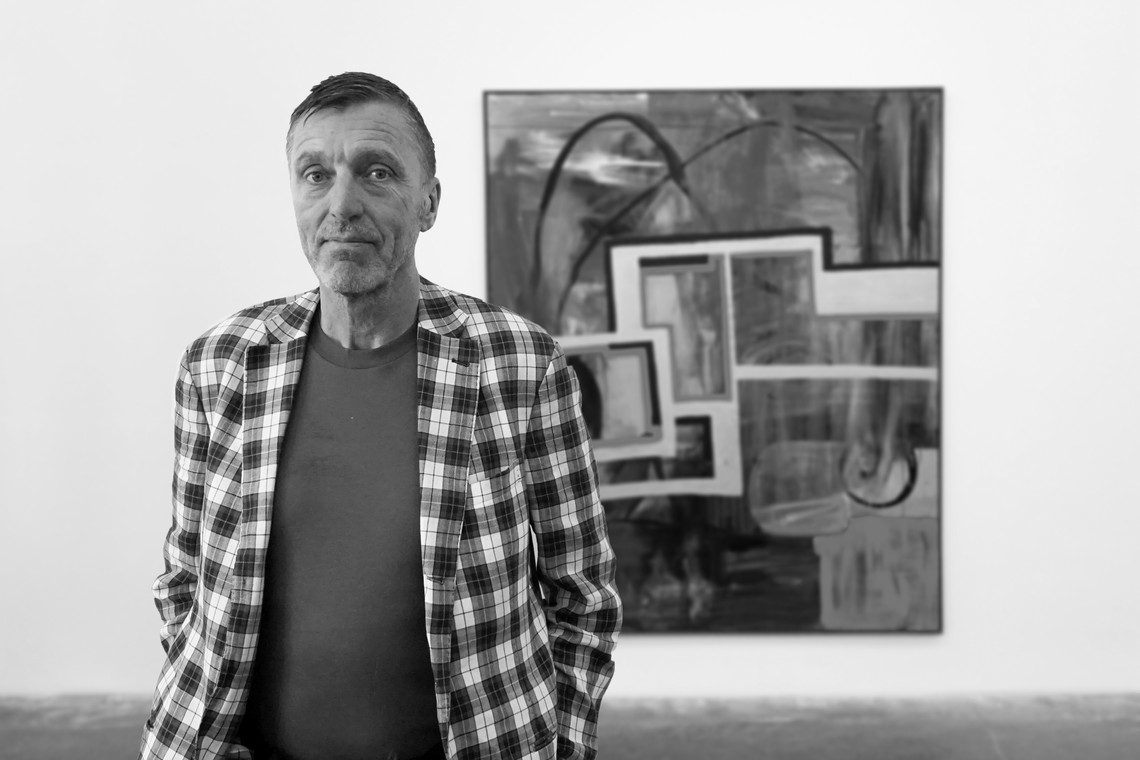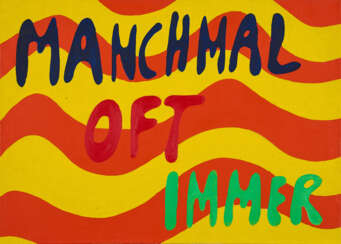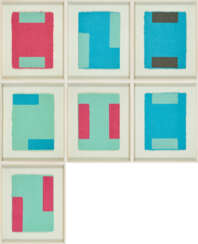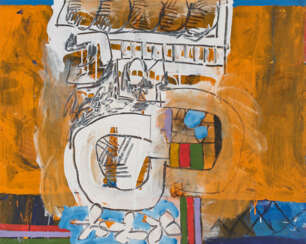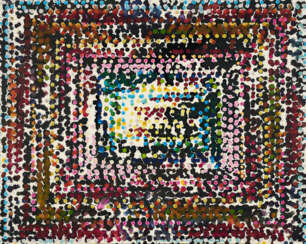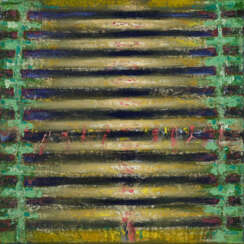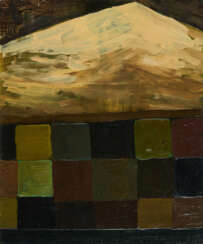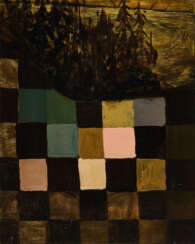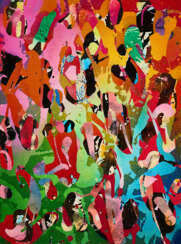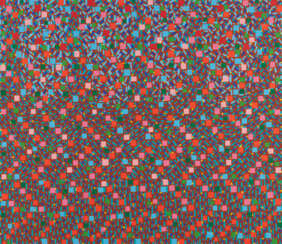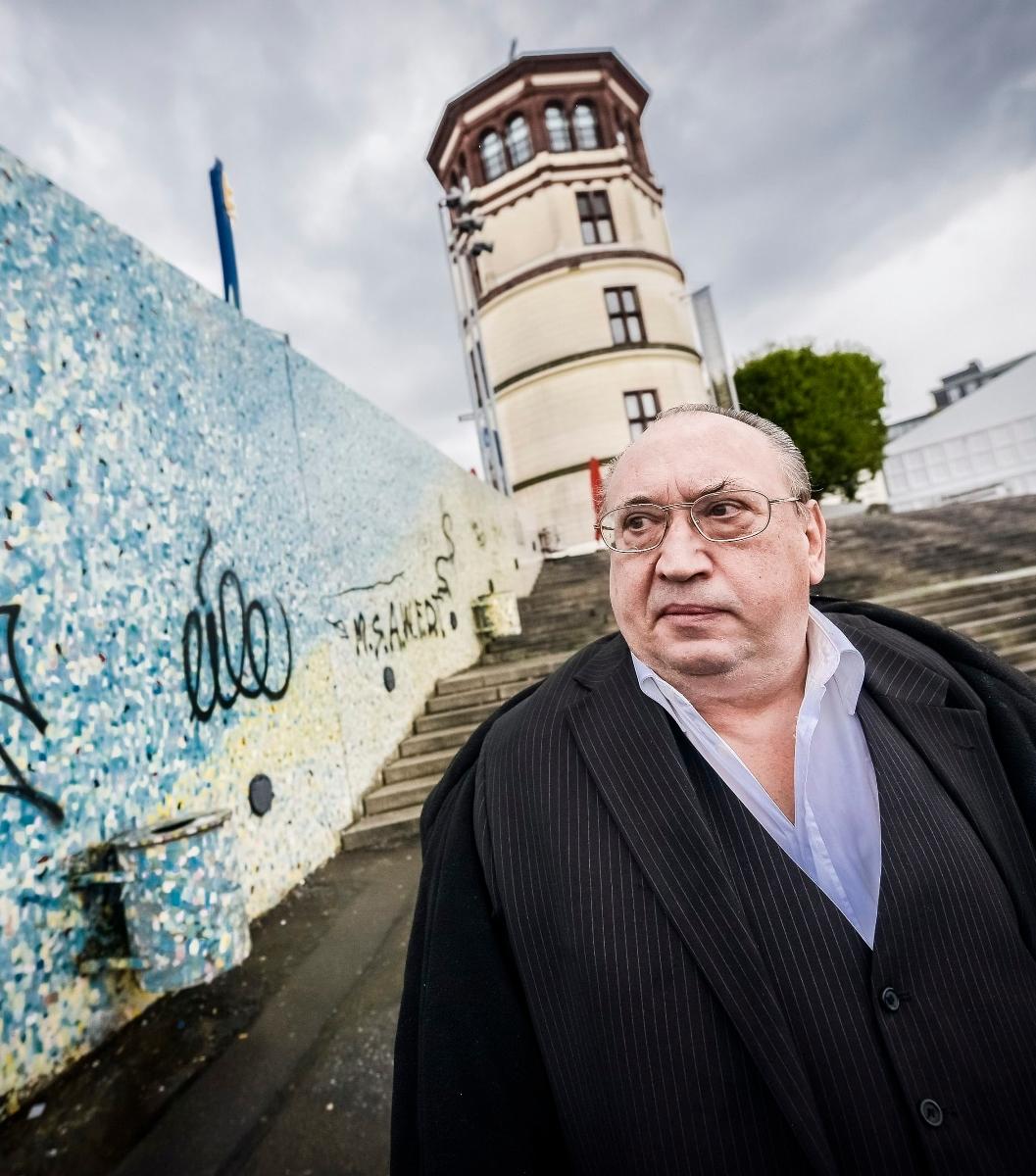
1192. Auction ONLINE ONLY | Spotlight: Contemporary
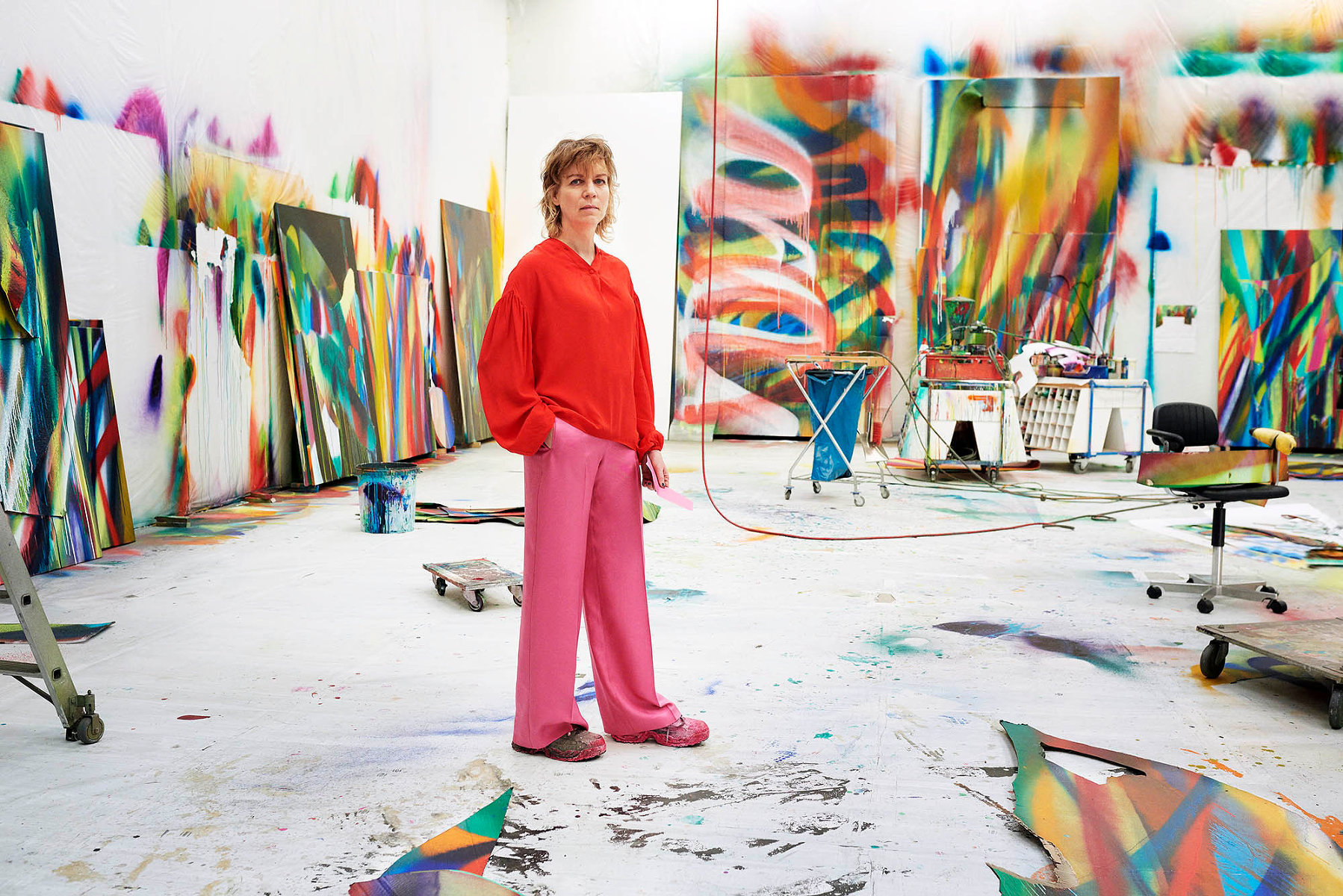
Katharina Grosse is a German artist. As an artist, Grosse's work employs a use of architecture, sculpture and painting. She is known for her large-scale, site-related installations to create immersive visual experiences. She has been using an industrial paint-sprayer to apply prismatic swaths of color to a variety of surfaces since the late 1990s, and often uses bright, unmixed sprayed-on acrylic paints to create both large-scale sculptural elements and smaller wall works.

Katharina Grosse is a German artist. As an artist, Grosse's work employs a use of architecture, sculpture and painting. She is known for her large-scale, site-related installations to create immersive visual experiences. She has been using an industrial paint-sprayer to apply prismatic swaths of color to a variety of surfaces since the late 1990s, and often uses bright, unmixed sprayed-on acrylic paints to create both large-scale sculptural elements and smaller wall works.

Katharina Grosse is a German artist. As an artist, Grosse's work employs a use of architecture, sculpture and painting. She is known for her large-scale, site-related installations to create immersive visual experiences. She has been using an industrial paint-sprayer to apply prismatic swaths of color to a variety of surfaces since the late 1990s, and often uses bright, unmixed sprayed-on acrylic paints to create both large-scale sculptural elements and smaller wall works.
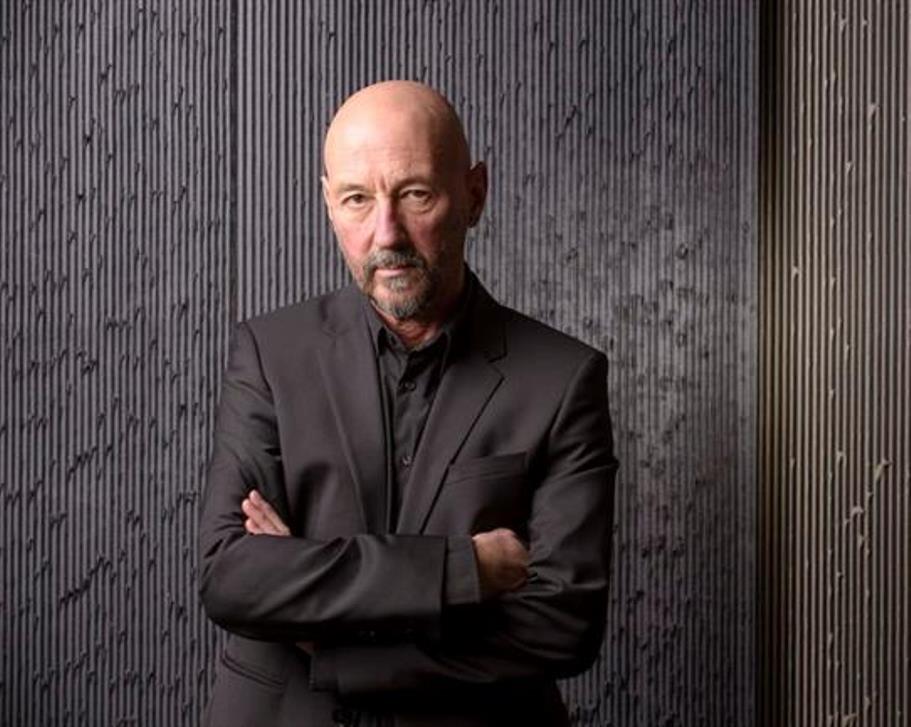
Jakob Gasteiger is an Austrian artist, representative of analytical painting, living and working in Vienna and in Weinviertel.
Gasteiger studied stage design at the University of Music and Performing Arts in Salzburg and attended the Institute for Teaching and Research in Graphic Arts. Since 2013, he has been working in the studio at Weinviertel. Jakob Gasteiger is considered a representative of analytical painting.
In his works he questions the parameters of painting, expanding and breaking the boundaries of graphics, painting and sculpture. The artist's most extensive group of works are predominantly monochrome paintings with relief structures, which are formed with the help of a comb spatula when applying paint to the background of the painting. As of late 2018, Gasteiger has expanded this group of works through the use of neon colors. He also creates aluminum sculptures and installations.

Jakob Gasteiger is an Austrian artist, representative of analytical painting, living and working in Vienna and in Weinviertel.
Gasteiger studied stage design at the University of Music and Performing Arts in Salzburg and attended the Institute for Teaching and Research in Graphic Arts. Since 2013, he has been working in the studio at Weinviertel. Jakob Gasteiger is considered a representative of analytical painting.
In his works he questions the parameters of painting, expanding and breaking the boundaries of graphics, painting and sculpture. The artist's most extensive group of works are predominantly monochrome paintings with relief structures, which are formed with the help of a comb spatula when applying paint to the background of the painting. As of late 2018, Gasteiger has expanded this group of works through the use of neon colors. He also creates aluminum sculptures and installations.
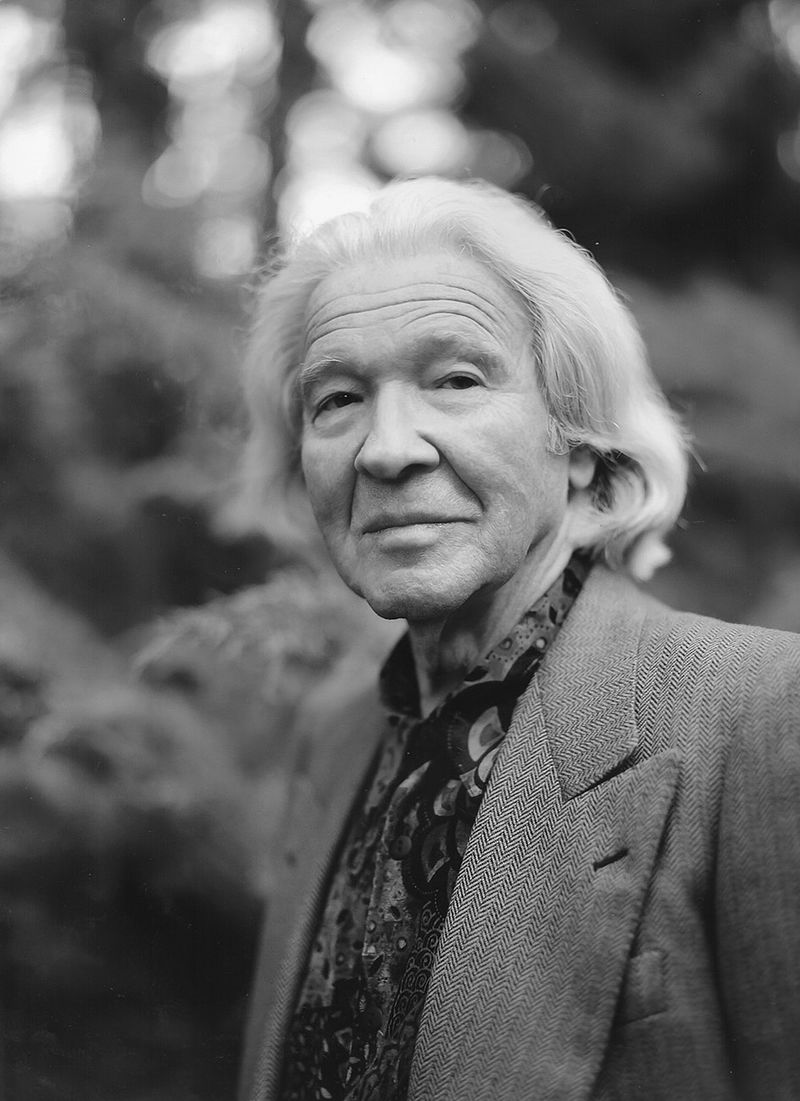
Christian Roeckenschuss was a German artist, a representative of postwar minimalism.
In his work, the artist experimented with stationery, working with grids, wood stencils, paper and plexiglass.
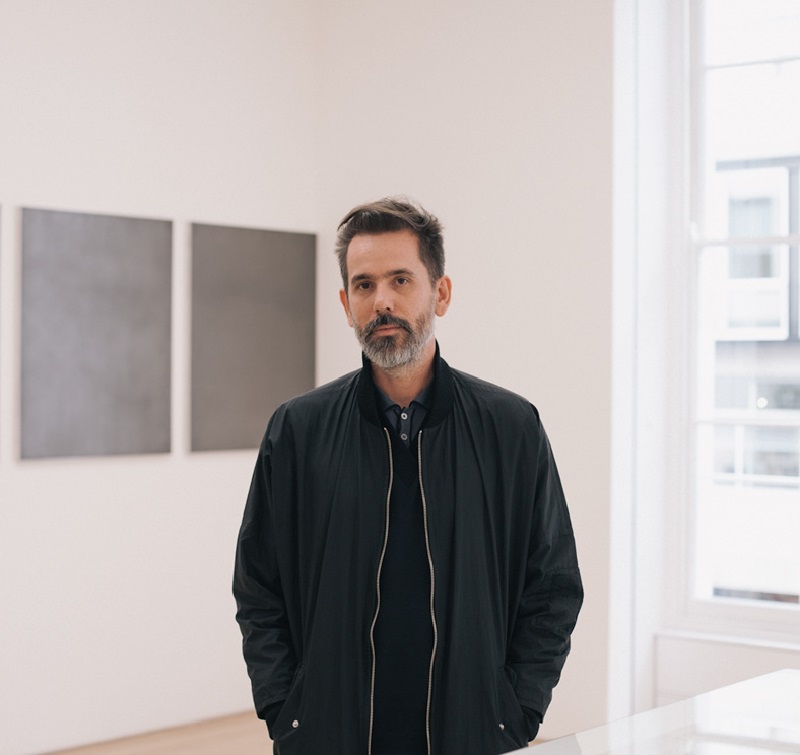
Diango Hernández is a Cuban artist who lives and works between Düsseldorf, Germany and Havana. From 1994 to 2003, Hernández was involved with Ordo Amoris Cabinet, which he co-founded with Ernesto Oroza, Juan Bernal, Francis Acea and Manuel Piña. He is married to artist Anne Pöhlmann.

Diango Hernández is a Cuban artist who lives and works between Düsseldorf, Germany and Havana. From 1994 to 2003, Hernández was involved with Ordo Amoris Cabinet, which he co-founded with Ernesto Oroza, Juan Bernal, Francis Acea and Manuel Piña. He is married to artist Anne Pöhlmann.
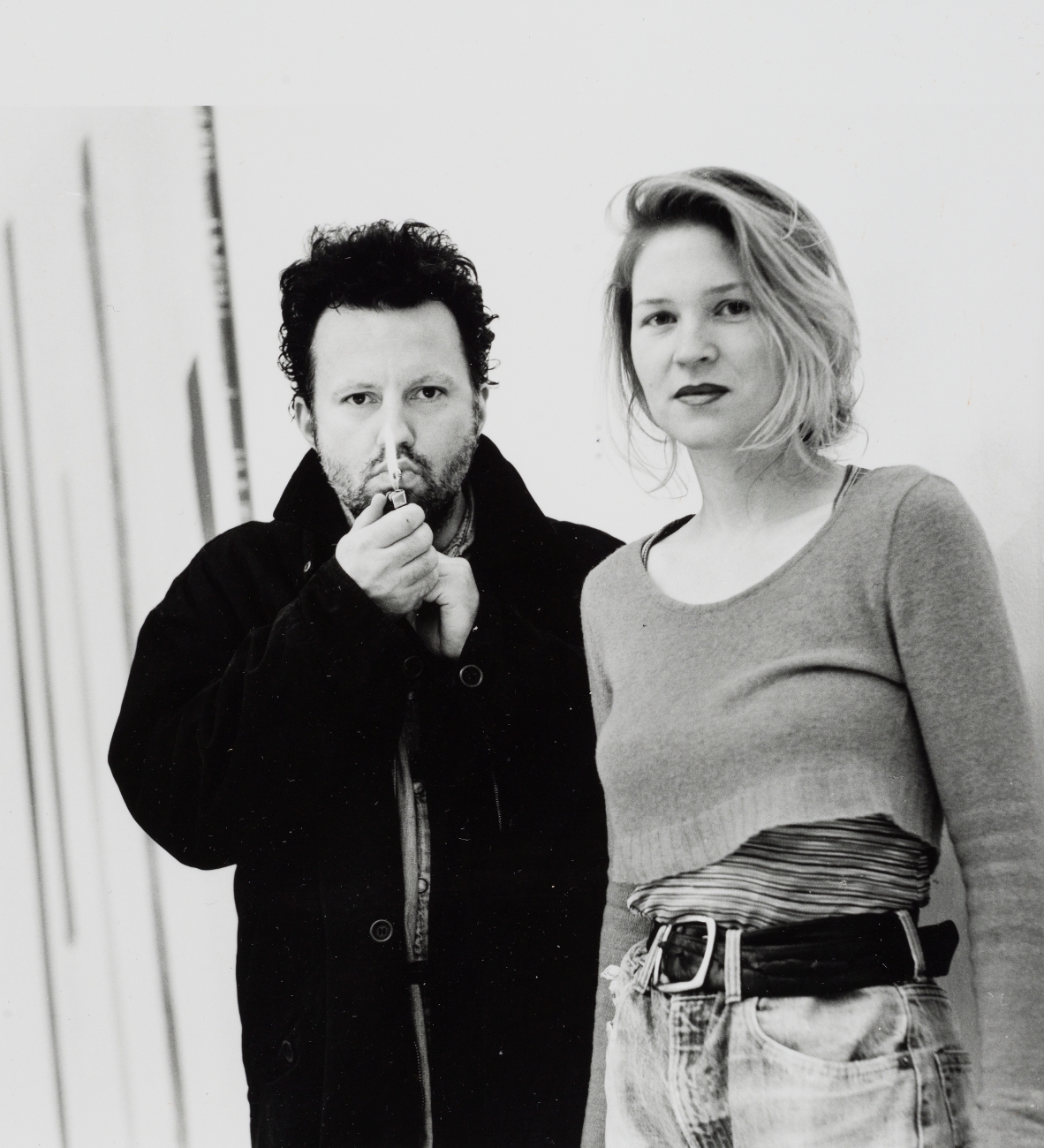
Frances Scholz is a vibrant figure in contemporary art and cinema. Scholz's education at the Hochschule der Künste in Berlin from 1982 to 1988 laid the groundwork for a career that spans painting, video art, and filmmaking. She is known for her conceptual approach to art, often blending narrative and abstraction to explore themes of memory, perception, and the construction of reality.
One of Frances Scholz's significant contributions to the art world is her film "Amboy," co-written and produced with science fiction writer Mark von Schlegell. Premiered in 2015, "Amboy" delves into the cultural mythologies and hallucinatory fabric of Los Angeles through a series of interconnected, unscripted encounters. The film is notable for its exploration of identity and the elusive nature of artistic legacy, set against the backdrop of the Mojave Desert's ghost towns. Scholz's work in "Amboy" exemplifies her interest in the intersection of narrative and visual art, utilizing a collaborative and open form of production that features contributions from notable figures in the art and entertainment industry.
Frances Scholz's artistry extends beyond filmmaking. She has exhibited widely, with notable shows at institutions such as the Chinati Foundation, where she held an open studio and screened "Amboy" in 2016, and solo exhibitions across the United States and Germany. Her work in group shows and solo exhibitions often reflects her multifaceted approach to media, including painting, video art, and installations, which are treated with the same editorial eye as her film material.
Currently living and working in Cologne, Frances Scholz continues to influence both the art and film worlds with her innovative projects. Her extensive body of work, including video art pieces like "The Moon" and "Awakening," and her involvement in collaborative projects, underscores her role as a dynamic force in contemporary culture.
For collectors and experts in art and antiques, Frances Scholz represents a unique investment in the overlap of visual art and cinema. Her ability to navigate and blend these worlds offers a rich tapestry of works that are both intellectually stimulating and visually compelling.
Stay updated on Frances Scholz's latest projects and exhibitions by signing up for newsletters focused on contemporary art and film. This subscription ensures you're informed about new sales, auction events, and exclusive insights into Scholz's evolving creative journey.
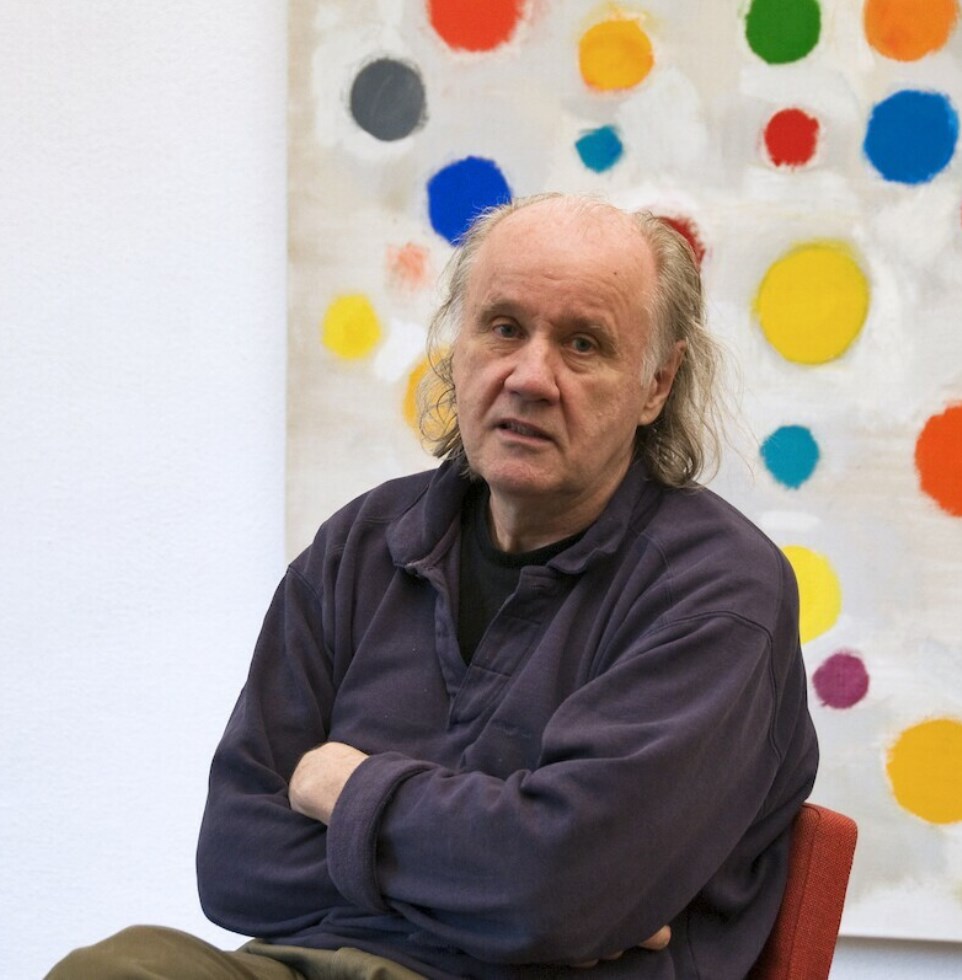
Jerry Zeniuk, a German and American artist of Ukrainian origin, is celebrated for his pioneering role in the realms of analytical, fundamental, and radical painting, movements that flourished primarily in the USA, Italy, and Germany during the 1970s. His art is distinguished by a meticulous focus on the essence of painting, exploring its potential and experiential spaces through a minimalist yet profound approach. Zeniuk's notable participation in documenta 6 in Kassel in 1977 underscored his significant contribution to these artistic trends, which has been recognized in numerous retrospectives.
Jerry Zeniuk's career includes an influential tenure as a professor at the Academy of Fine Arts in Munich from 1993 to 2011, further cementing his impact on the art world. His works, characterized by their subtle yet impactful exploration of color and form, have been included in the collections of prestigious institutions such as the Lenbachhaus in Munich, Neue Galerie in Kassel, Neues Museum Weserburg in Bremen, and internationally at the FRAC - Pays de la Loire in France and Kunstmuseum Winterthur in Switzerland, among others.
For collectors and art experts, Jerry Zeniuk's work represents a nuanced and intellectual approach to modern painting, offering depth and contemplation in each piece. His contributions have not only shaped the trajectory of contemporary art but also offer a timeless appeal to those who appreciate the layered complexities of visual expression.
Stay updated on Jerry Zeniuk's exhibitions and available works by signing up for newsletters tailored for art collectors and enthusiasts. This subscription ensures you remain informed about the latest sales and auction events featuring Zeniuk's work, providing unique opportunities to engage with the evolving landscape of contemporary art.

Jerry Zeniuk, a German and American artist of Ukrainian origin, is celebrated for his pioneering role in the realms of analytical, fundamental, and radical painting, movements that flourished primarily in the USA, Italy, and Germany during the 1970s. His art is distinguished by a meticulous focus on the essence of painting, exploring its potential and experiential spaces through a minimalist yet profound approach. Zeniuk's notable participation in documenta 6 in Kassel in 1977 underscored his significant contribution to these artistic trends, which has been recognized in numerous retrospectives.
Jerry Zeniuk's career includes an influential tenure as a professor at the Academy of Fine Arts in Munich from 1993 to 2011, further cementing his impact on the art world. His works, characterized by their subtle yet impactful exploration of color and form, have been included in the collections of prestigious institutions such as the Lenbachhaus in Munich, Neue Galerie in Kassel, Neues Museum Weserburg in Bremen, and internationally at the FRAC - Pays de la Loire in France and Kunstmuseum Winterthur in Switzerland, among others.
For collectors and art experts, Jerry Zeniuk's work represents a nuanced and intellectual approach to modern painting, offering depth and contemplation in each piece. His contributions have not only shaped the trajectory of contemporary art but also offer a timeless appeal to those who appreciate the layered complexities of visual expression.
Stay updated on Jerry Zeniuk's exhibitions and available works by signing up for newsletters tailored for art collectors and enthusiasts. This subscription ensures you remain informed about the latest sales and auction events featuring Zeniuk's work, providing unique opportunities to engage with the evolving landscape of contemporary art.
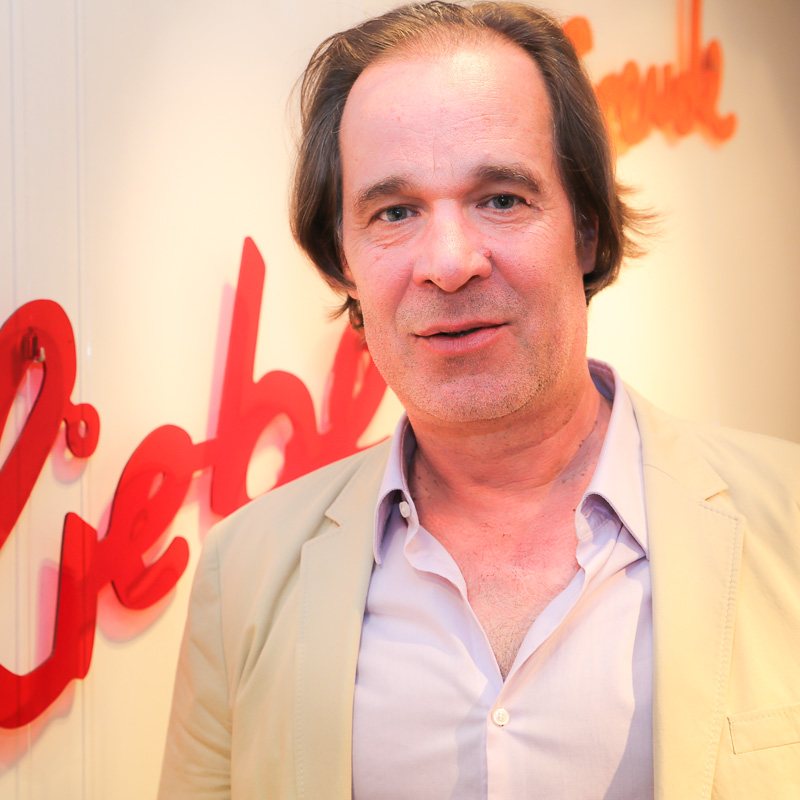
Rupprecht Matthies is a distinguished German artist celebrated for his innovative approach to art that intertwines language and culture. His work, characterized by a deep exploration of words and their impact, bridges the gap between individual experiences and collective expression. Rupprecht Matthies' background in sociology, which he studied before delving into the arts at the University of Hamburg, informs his artistic endeavors, allowing him to craft installations that resonate on multiple levels with a wide audience.
One of Rupprecht Matthies' most notable works is the "¿Being Home?" project, showcased at the Denver Art Museum. This installation is a testament to his ability to engage communities and transform personal stories into compelling visual narratives. Through collaborations with immigrants in Denver, Rupprecht Matthies collected words that held significant personal meanings, crafting them into a vivid landscape of words using materials like wood, Plexiglas, and foam. This project not only highlights his skill in word art but also his commitment to creating art that fosters community engagement and reflection on the concept of home and belonging.
Matthies' art extends beyond installations, as he has won numerous competitions and his works are collected and exhibited both nationally and internationally. His unique approach to creating "word art" allows him to encapsulate values and concepts in physical form, making his contributions to the art world both unique and impactful.
For collectors and experts in art and antiques, Rupprecht Matthies' work represents a fascinating intersection of art, culture, and social commentary. His ability to distill complex societal themes into engaging visual forms makes his work a valuable addition to any collection focused on contemporary art that challenges and captivates.
If you're intrigued by the innovative blend of language and visual art that Rupprecht Matthies brings to the contemporary art scene, consider signing up for updates. This subscription will keep you informed about new product sales and auction events related to Matthies' work, ensuring you don't miss out on the opportunity to own a piece of this remarkable artist's legacy.

Rupprecht Matthies is a distinguished German artist celebrated for his innovative approach to art that intertwines language and culture. His work, characterized by a deep exploration of words and their impact, bridges the gap between individual experiences and collective expression. Rupprecht Matthies' background in sociology, which he studied before delving into the arts at the University of Hamburg, informs his artistic endeavors, allowing him to craft installations that resonate on multiple levels with a wide audience.
One of Rupprecht Matthies' most notable works is the "¿Being Home?" project, showcased at the Denver Art Museum. This installation is a testament to his ability to engage communities and transform personal stories into compelling visual narratives. Through collaborations with immigrants in Denver, Rupprecht Matthies collected words that held significant personal meanings, crafting them into a vivid landscape of words using materials like wood, Plexiglas, and foam. This project not only highlights his skill in word art but also his commitment to creating art that fosters community engagement and reflection on the concept of home and belonging.
Matthies' art extends beyond installations, as he has won numerous competitions and his works are collected and exhibited both nationally and internationally. His unique approach to creating "word art" allows him to encapsulate values and concepts in physical form, making his contributions to the art world both unique and impactful.
For collectors and experts in art and antiques, Rupprecht Matthies' work represents a fascinating intersection of art, culture, and social commentary. His ability to distill complex societal themes into engaging visual forms makes his work a valuable addition to any collection focused on contemporary art that challenges and captivates.
If you're intrigued by the innovative blend of language and visual art that Rupprecht Matthies brings to the contemporary art scene, consider signing up for updates. This subscription will keep you informed about new product sales and auction events related to Matthies' work, ensuring you don't miss out on the opportunity to own a piece of this remarkable artist's legacy.
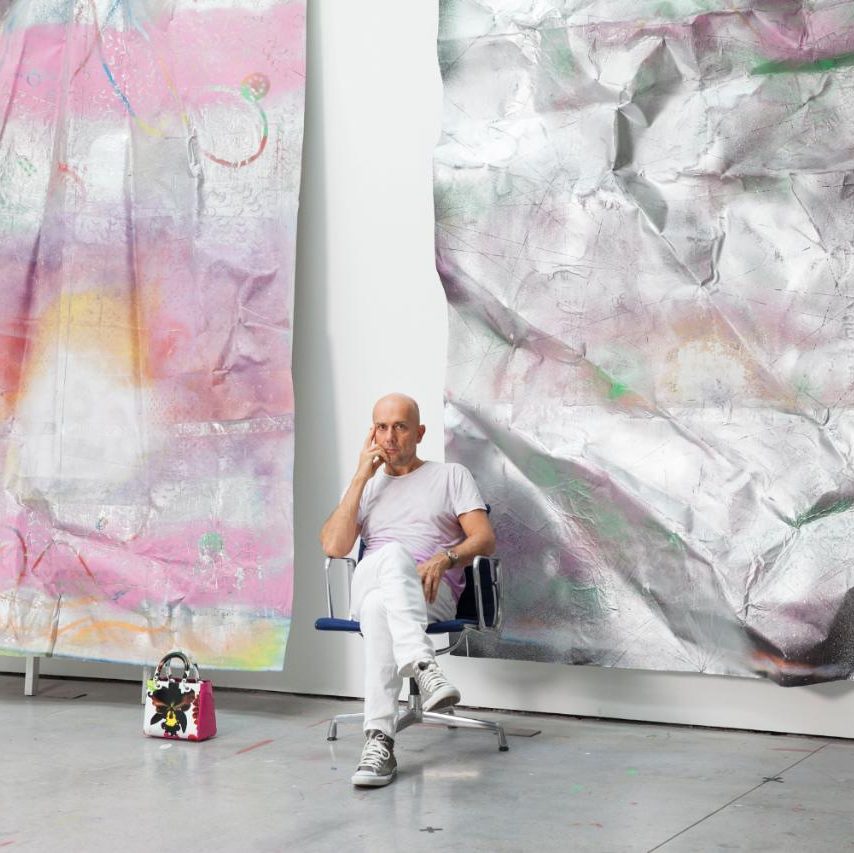
Marc Quinn is a contemporary English painter and sculptor, a member of the Young British Artists, a group that has dominated the art scene since the 1990s. He is known for his experimental approach to creativity and for incorporating shocking elements into his work.
Quinn declares to explore extreme aspects of the human body in his art. He experiments with a variety of materials including organic matter such as blood, bread and flowers, as well as marble, concrete and stainless steel. His portfolio includes sculptures, portraits, installations, graffiti and paintings
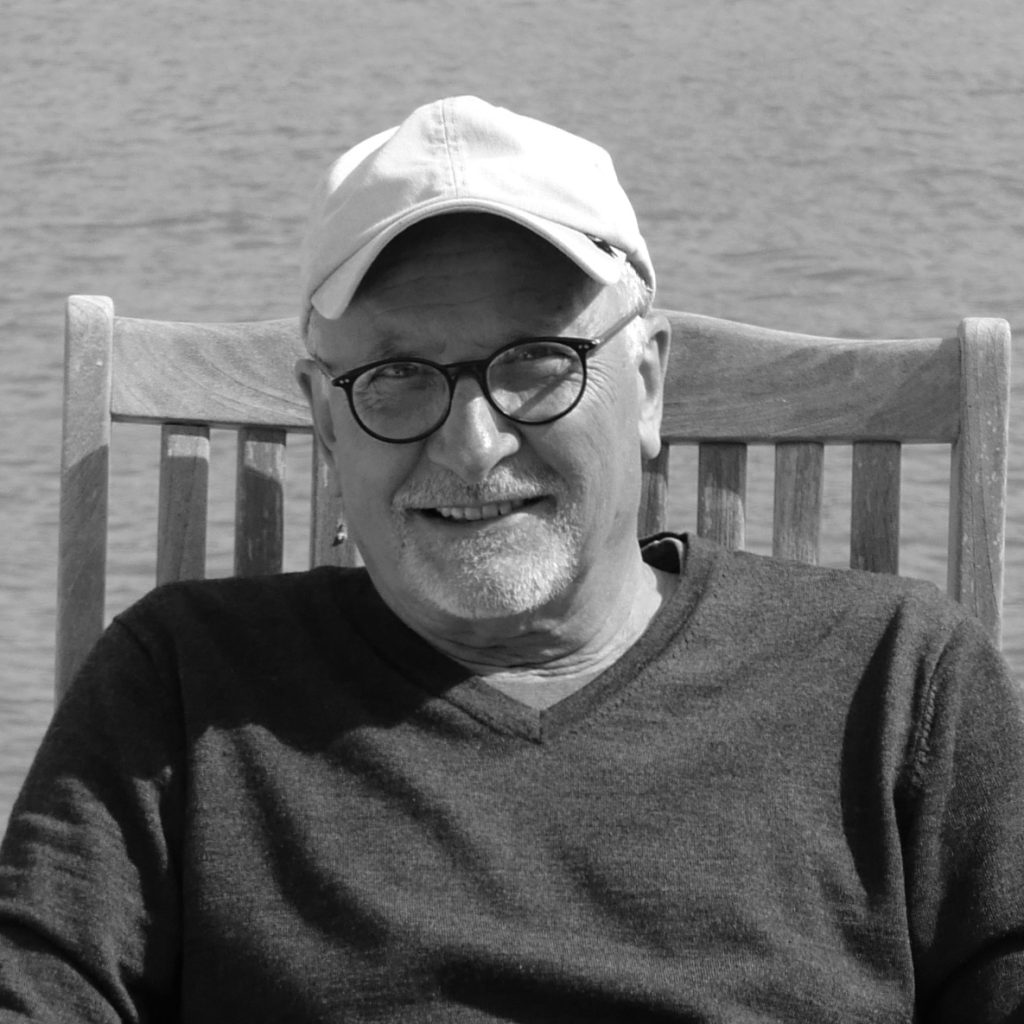
Frank Badur is a German color field painting artist living and working in Berlin and Poikko, Finland.
Badur studied painting in Berlin, in 1973 he opened a studio in Finland and has lived in two countries ever since. He co-founded the group Sistema in 1975 and was professor of painting at the Berlin University of the Arts from 1985 to 2009.
Frank Badur's paintings are characterized by visual clarity, his palette is minimalist - often he uses only two colors in a painting, composed in balanced color fields. Typically, the artist does not use pure colors, but rather mixtures, which he applies up to 30 layers on the canvas. The selection and combination of these colors, which the artist believes are based on both intuition and experience, create spectacular, complex color spaces. However, despite the seemingly strictly formal structure, the composition never follows a mathematical principle.
Frank Badur has been a member of the Berlin Academy of Arts since 1992 and a member of the Association of German Artists.
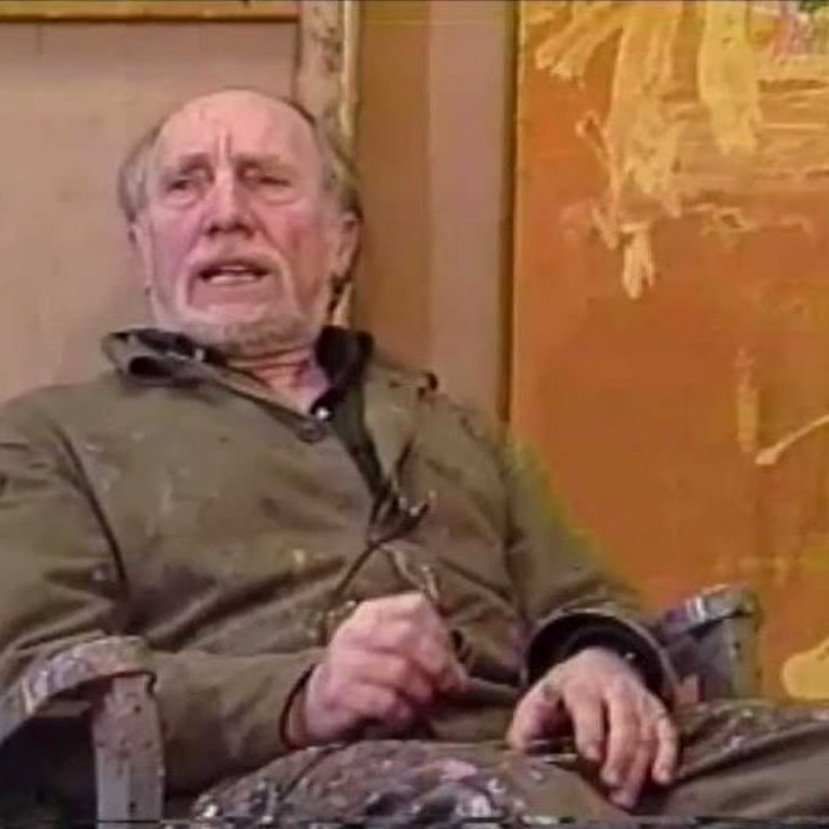
Joe Stefanelli, birth name Joseph J. Stefanelli, is an American abstractionist painter of the New York School.
After studying at the Philadelphia Museum School of Art and the Pennsylvania Academy of the Fine Arts from 1942 to 1946, Joe Stefanelli worked as a military illustrator in the service of the United States Army. In 1947, he enrolled at the Hans Hofmann School of Fine Arts in New York City. This art school, opened in 1934, was a major influence on the young artists of the New York School.
Stefanelli was an artist of the first generation of American Abstract Expressionists, whose members also included Willem de Kooning, Jackson Pollock, Adolph Gottlieb, Barnett Newman, Robert Motherwell, and others. Their influence and artistic innovation were recognized worldwide by the 1950s. The New York School of Abstract Expressionism became the leading art movement after World War II.
Joe Stefanelli held various teaching positions from 1960 to 1979, including at the University of California and Princeton University, New York University, Columbia University, Brooklyn College and Temple University in Rome. His work is represented in many museums and collections.
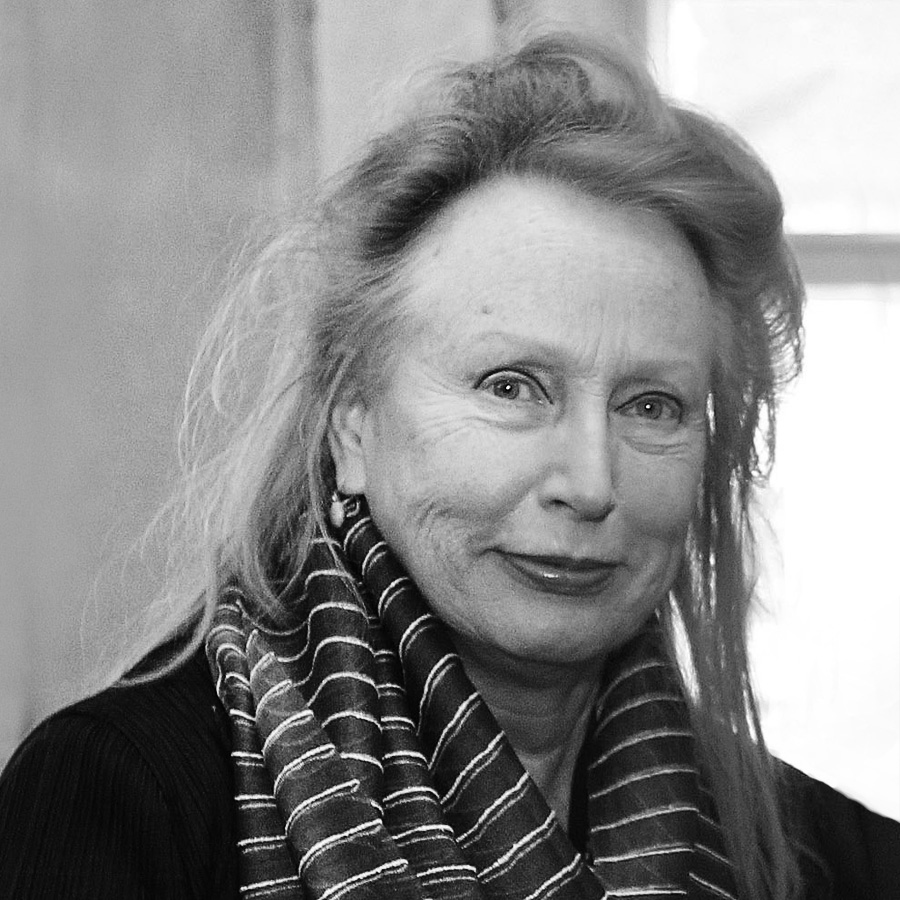
Rebecca Horn is a German visual artist, who is best known for her installation art, film directing, and her body modifications such as Einhorn (Unicorn), a body-suit with a very large horn projecting vertically from the headpiece. She directed the films Der Eintänzer (1978), La ferdinanda: Sonate für eine Medici-Villa (1982) and Buster's Bedroom (1990). Horn presently lives and works in Paris and Berlin.

Rebecca Horn is a German visual artist, who is best known for her installation art, film directing, and her body modifications such as Einhorn (Unicorn), a body-suit with a very large horn projecting vertically from the headpiece. She directed the films Der Eintänzer (1978), La ferdinanda: Sonate für eine Medici-Villa (1982) and Buster's Bedroom (1990). Horn presently lives and works in Paris and Berlin.
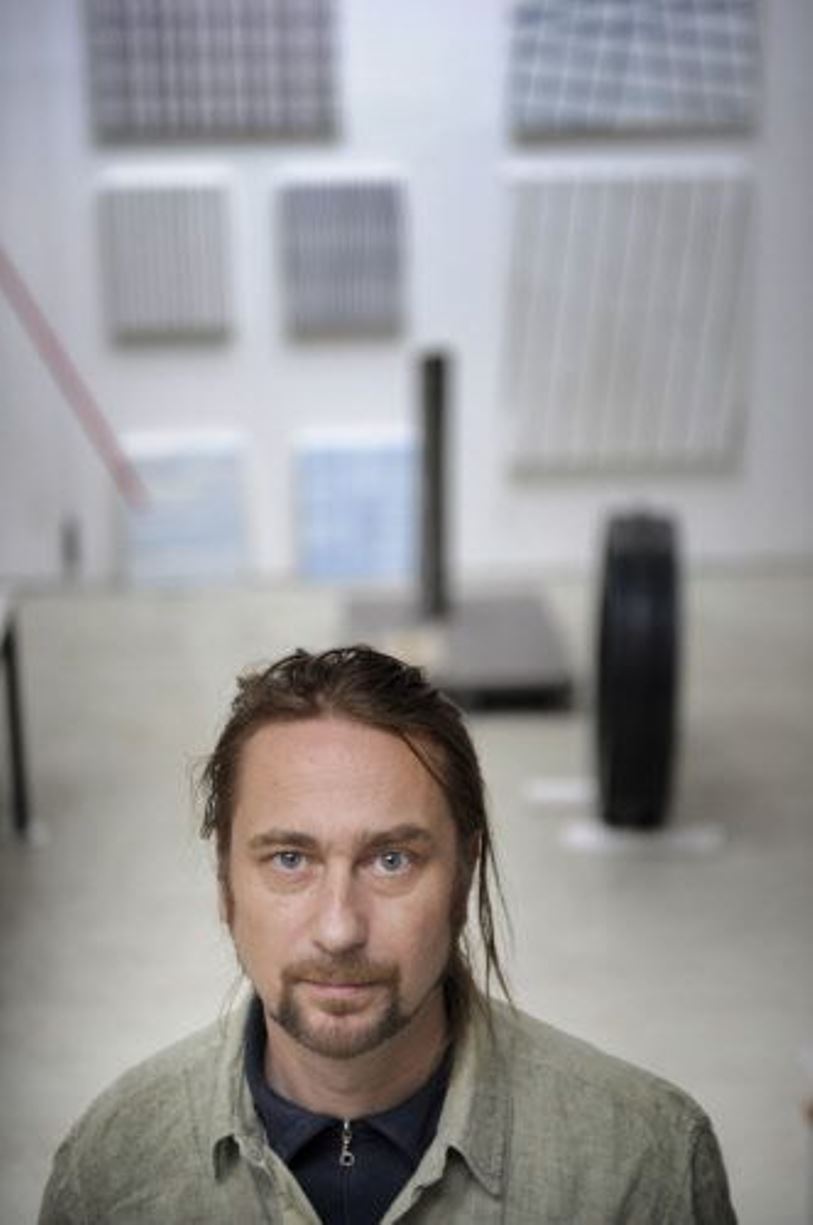
Thomas Baumann is an Austrian artist and filmmaker living and working in Vienna.
Baumann studied at the Academy of Fine Arts in Vienna, but is engaged in a wide range of creative endeavors. He mixes categories of art and challenges values and forms. Through his electronic sculptures, machine paintings, films and installations that give visitors their own freedom of action, Baumann searches for structural connections between material and mental spaces.
For example, one of his spatial sculptures with a pre-programmed score: silver foil moves in a certain rhythm, it straightens, contracts or expands. The sculpture is constantly changing its form - it destroys the shape it has just taken to create a new one. Baumann also constructs artworks from floor ropes, swings, doors, organ pipes and other objects. Many of his works contain acoustic elements. Since 1990, Bauman has also made films and videos.
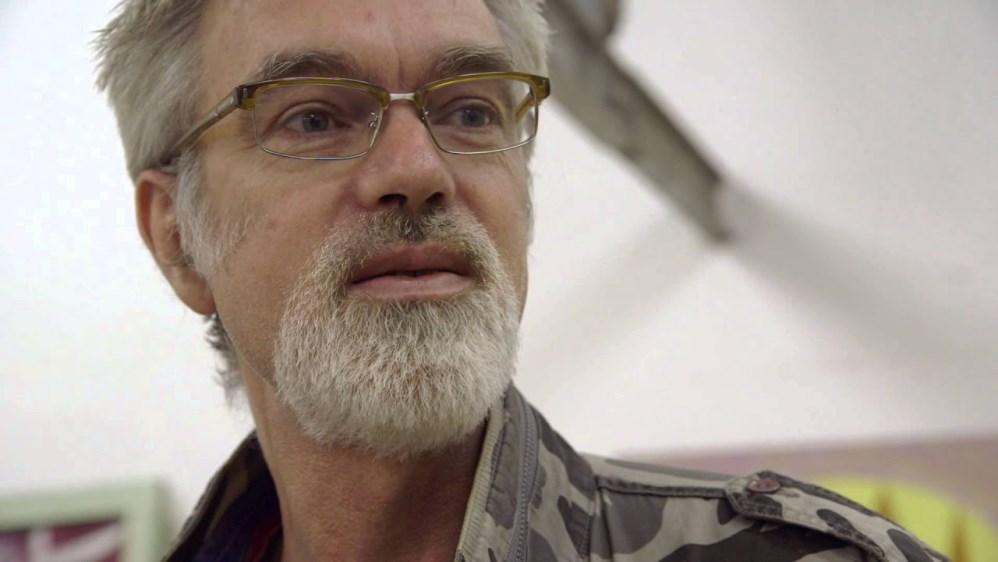
Rob Birza is a Dutch painter and sculptor living and working in Amsterdam.
Rob Birza studied at the Academy of Visual Arts Sint-Jost in Breda and at Atelier '63 in Haarlem. He initially painted paintings, gouaches, and watercolors and quickly gained recognition in the Dutch art scene. The artist combined medieval painting techniques with contemporary subjects borrowed from comic books and television series. In his work, he regularly referenced the works of modern masters, contrasting banality and high art. Figural canvases and abstract compositions alternate with colorful still lifes with flowers and large-format paintings depicting scenes of the Afghan war.
Since the 1990s, Rob Birza has also begun to create installations with figures made of styrofoam, papier-mâché and other materials. These figures often contrasted sharply with the paintings. Birza also combined furniture like chairs and lamps in his works.
Rob Birza's work has been widely exhibited in numerous solo and group exhibitions both nationally and internationally and is included in many private and public collections.
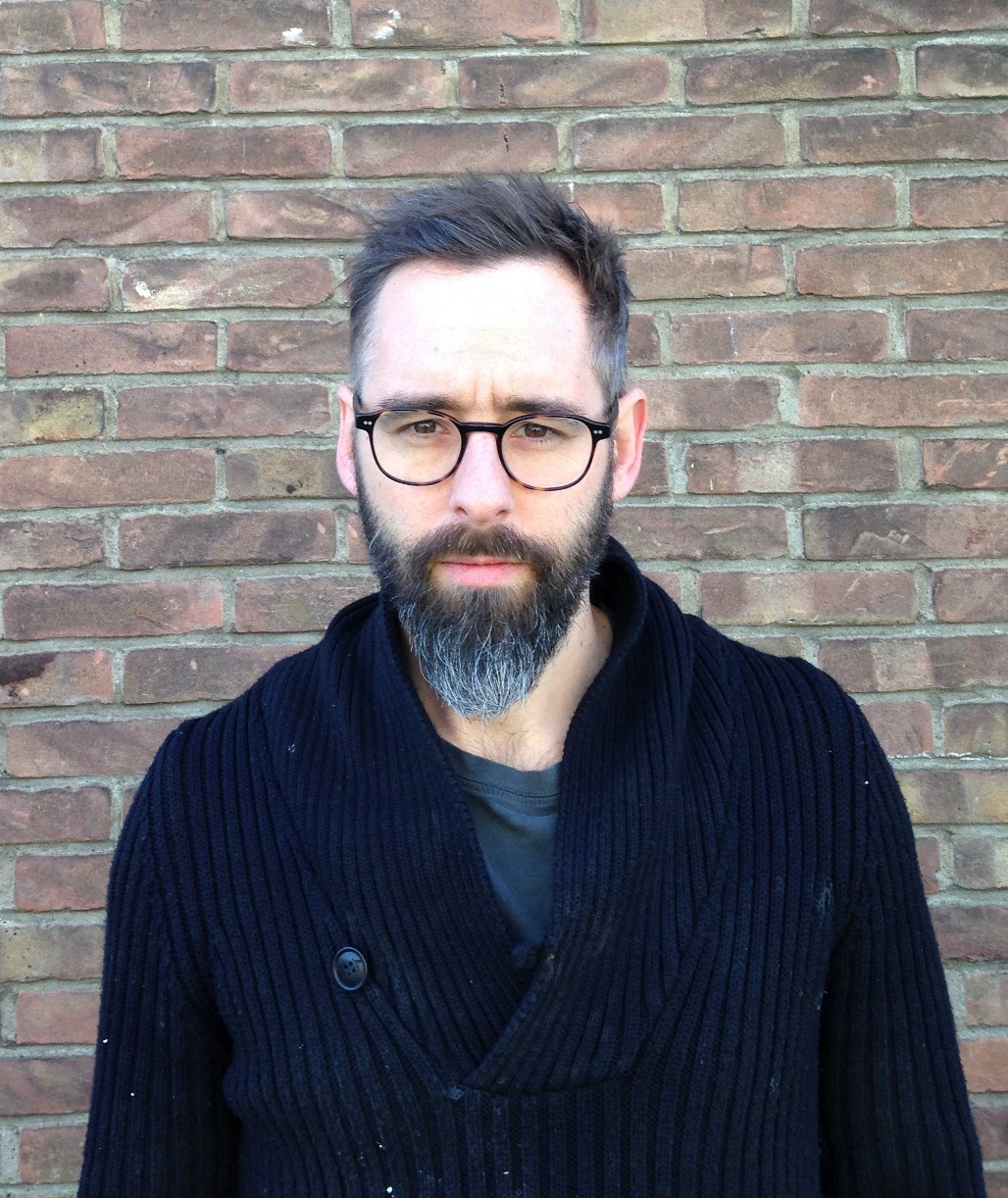
Benedikt Hipp is a German painter and sculptor who lives and works in Munich and Amsterdam.
Hipp studied at the academies of fine arts in Nuremberg, Munich and Bologna. Even during his studies he attracted attention with his characteristic works. His paintings and panels, some of them large format, are created in the technique of the old masters - oil paints on wooden panels and varnished.
For example, one of Hipp's latest works, the series "Ocean Bark" embodies an artistic confrontation with the last unexplored corner of our earth - the depths of the sea. These works are created as a result of a rather complex technological process and create a fantastic impression reminiscent of surrealism. Architecture, animals and people are alienated, united and presented in a disturbing, dreamlike way.
Benedikt Hipp is an extremely versatile artist who expresses himself in several genres. He has works on paper, collages and ink drawings, recently focusing on objects and sculpture as well as spatial installations.
In 2021, Hipp was awarded the Rome Prize Fellowship of the Deutsche Akademie Villa Massimo, Germany's most renowned award for artists.

Benedikt Hipp is a German painter and sculptor who lives and works in Munich and Amsterdam.
Hipp studied at the academies of fine arts in Nuremberg, Munich and Bologna. Even during his studies he attracted attention with his characteristic works. His paintings and panels, some of them large format, are created in the technique of the old masters - oil paints on wooden panels and varnished.
For example, one of Hipp's latest works, the series "Ocean Bark" embodies an artistic confrontation with the last unexplored corner of our earth - the depths of the sea. These works are created as a result of a rather complex technological process and create a fantastic impression reminiscent of surrealism. Architecture, animals and people are alienated, united and presented in a disturbing, dreamlike way.
Benedikt Hipp is an extremely versatile artist who expresses himself in several genres. He has works on paper, collages and ink drawings, recently focusing on objects and sculpture as well as spatial installations.
In 2021, Hipp was awarded the Rome Prize Fellowship of the Deutsche Akademie Villa Massimo, Germany's most renowned award for artists.
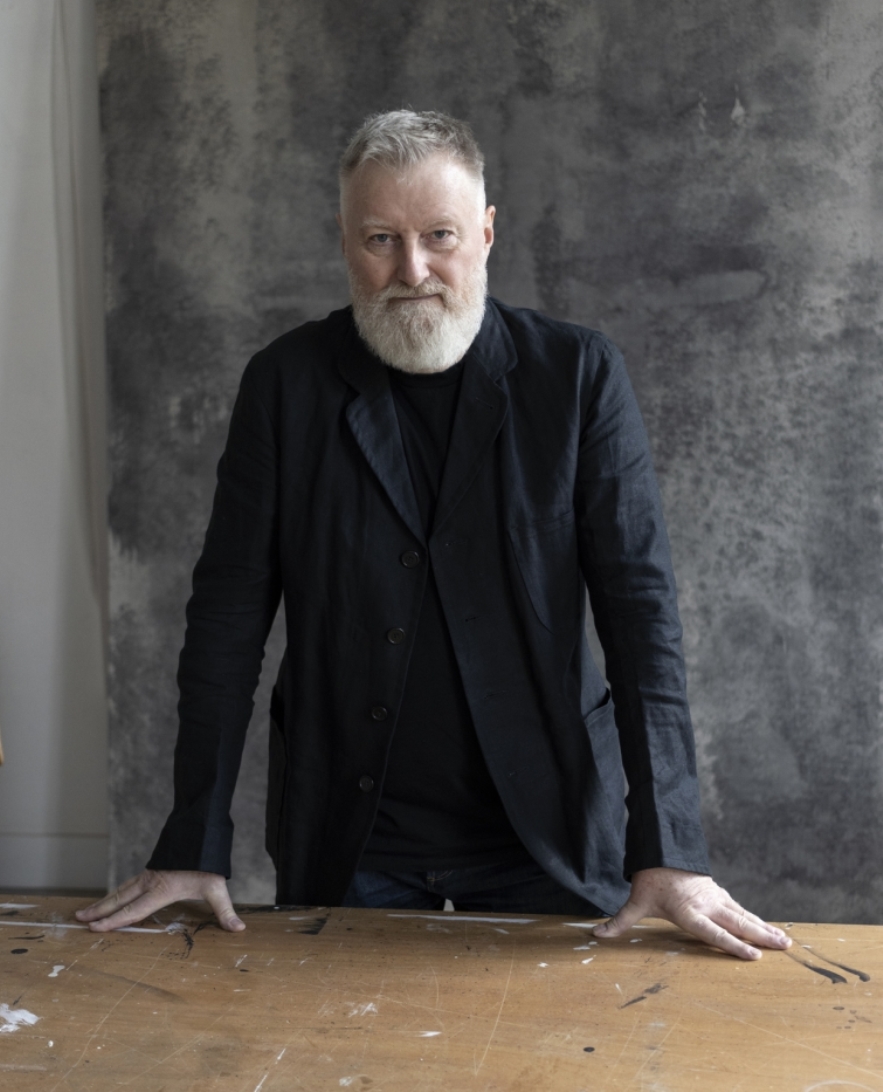
Perry Roberts is a British artist and designer living and working in Antwerp.
Roberts graduated from Bristol Polytechnic and Goldsmiths College, moving to Antwerp in 1995. His artistic practice covers a wide range of fields: abstract drawing and painting, architectural interventions in public spaces, linguo-typographic murals and furniture design. The artist approaches each type of creation with equal care, which is why all of his works are unique. In his works, Roberts consistently explores the relationship between abstraction, architecture and language.
Perry Roberts has exhibited internationally, including the United States and South America, throughout Europe, and in Australia. His work is held in many private, public and corporate collections.
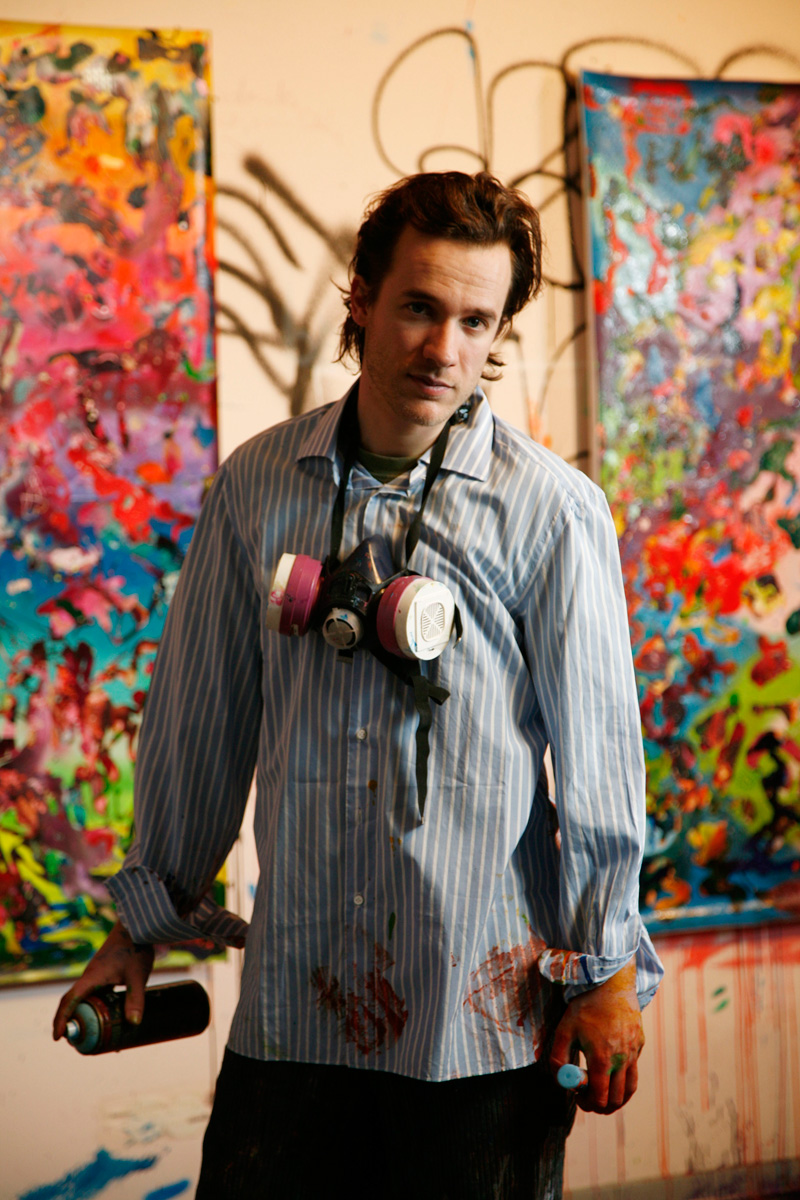
Christian Awe is a German urban artist known for his large-scale murals.
He was educated at the University of Art in Berlin, where he lives and works.
Christian Awe describes his work as urban expressionist painting, his abstract works are saturated with vivid colors. Awe uses spray paint and acrylics, ink and watercolor, marker and oil pastel. His technique is characterized by scraping off the top layers of applied paint in order to expose those already hidden.
